The price of Bitcoin (BTC) has reversed sharply a day after retesting $28,590, its highest level in two months.
What's pushing Bitcoin price lower?
As of Oct. 3, BTC was around $27,390, down over 4% from the previous day. The cryptocurrency's drop on the daily timeframe chart accompanied higher trading volumes, indicating bearish sentiment among traders.

The following factors appears responsible for Bitcoin's underperformance in the past 24 hours.
Soaring U.S. bond yields
Elevated U.S. bond yields have weighed heavily on Bitcoin's price performance.
On Oct. 3, the benchmark U.S. 10-year Treasury note yield rose to 4.75%, the highest in sixteen years. This followed Federal Reserve officials reminding the markets that interest rates won't drop in 2023 and 2024.
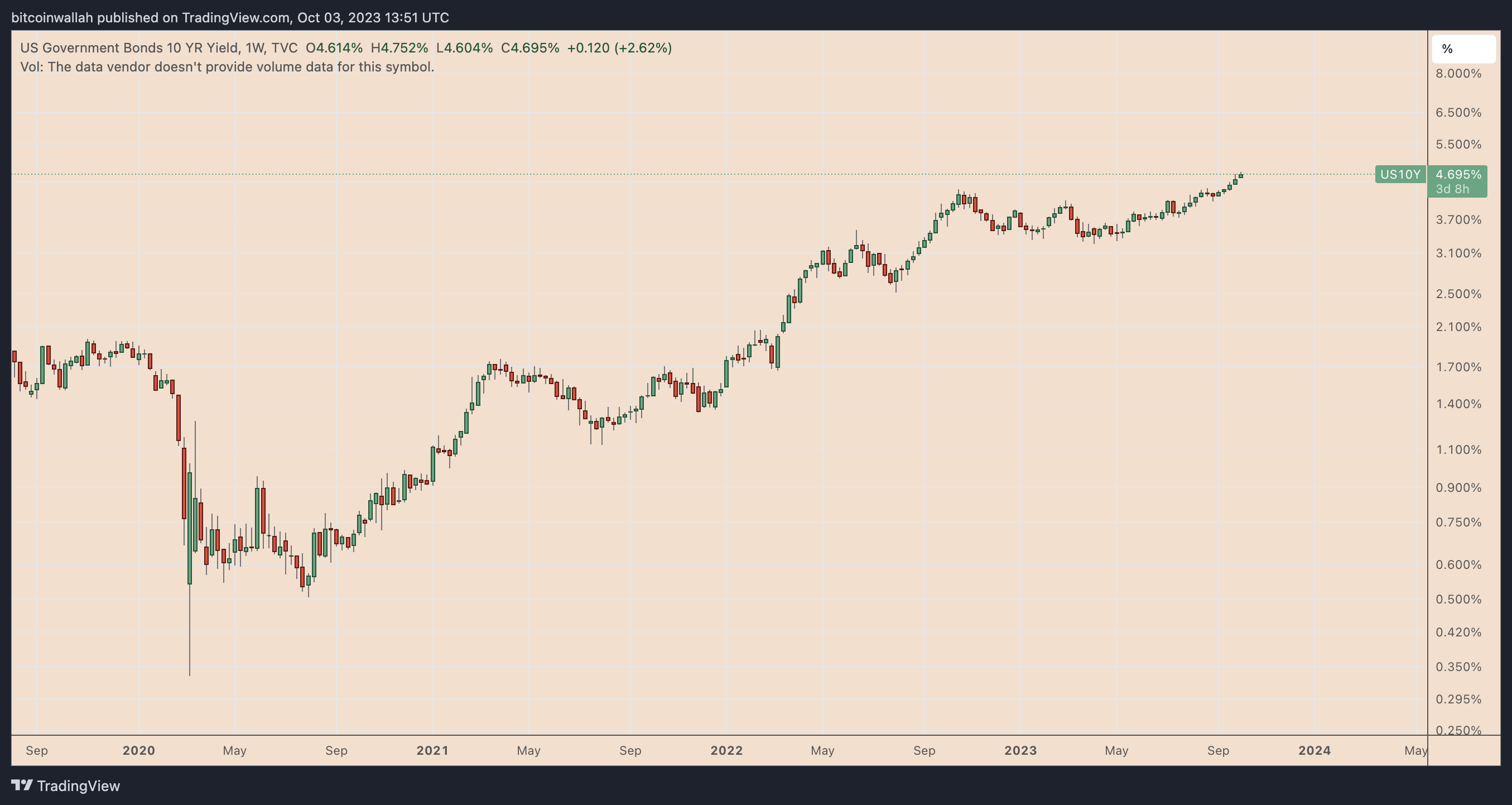
Theoretically, higher yields increase the opportunity cost of holding Treasuries, which, in turn, benefits the U.S. dollar's standing against the world's top foreign currencies. Therefore, it's not surprising that on Oct. 3, the U.S. dollar index (DXY) climbed to its highest level since November 2022.
A stronger dollar has been bearish for Bitcoin throughout 2023, with their inverse trend clearly visible in the chart below.
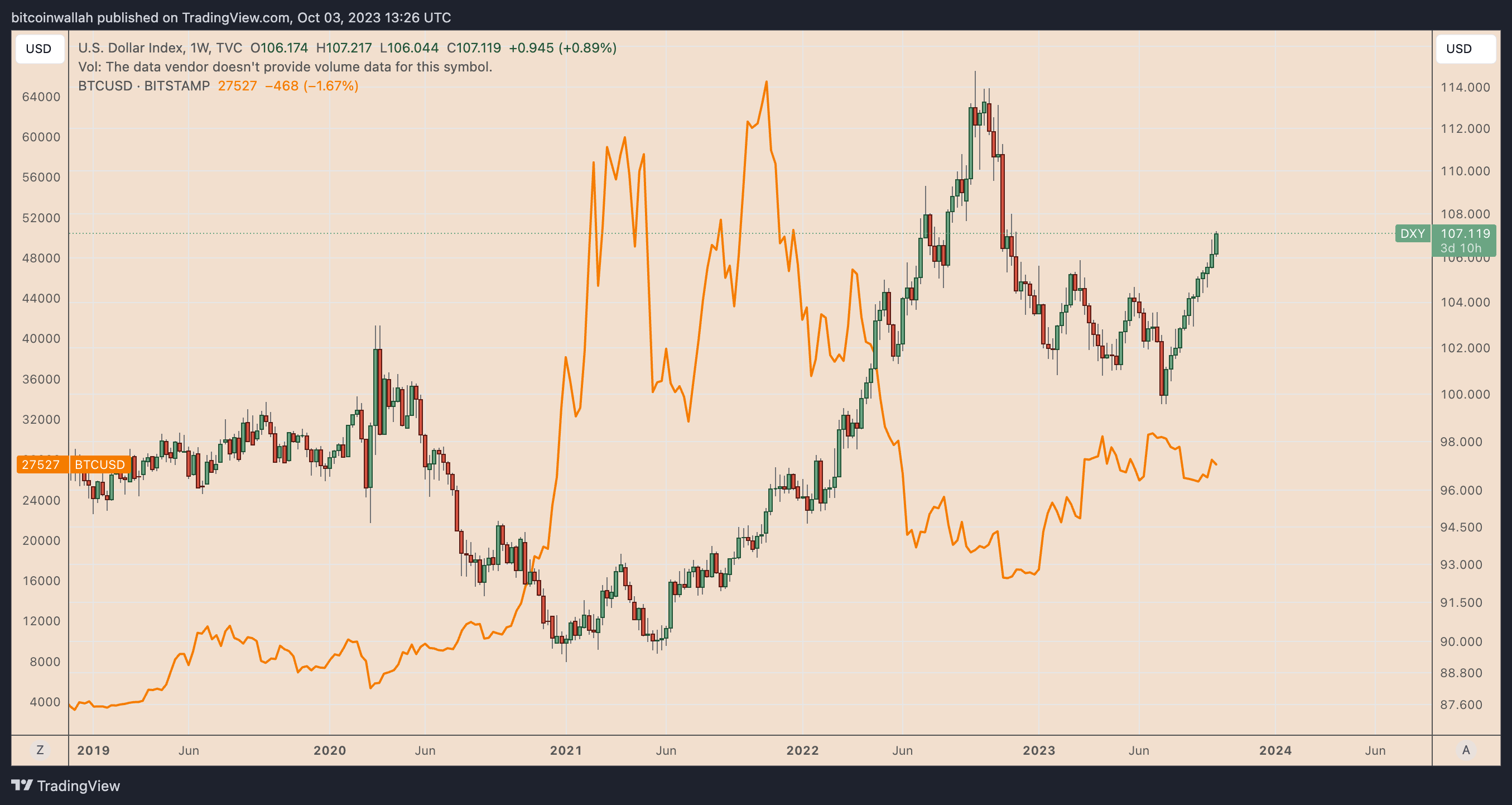
Overbought correction
From a technical perspective, Bitcoin's pullback was all but predictable due to its overbought relative strength index (RSI).
On Oct. 2, BTC's four-hour (4H) RSI crossed above 70 to reach its most overbought level in over a month. An overbought RSI typically follows a period of correction or consolidation, pointing to a lack of buyers at higher price levels, as shown below.
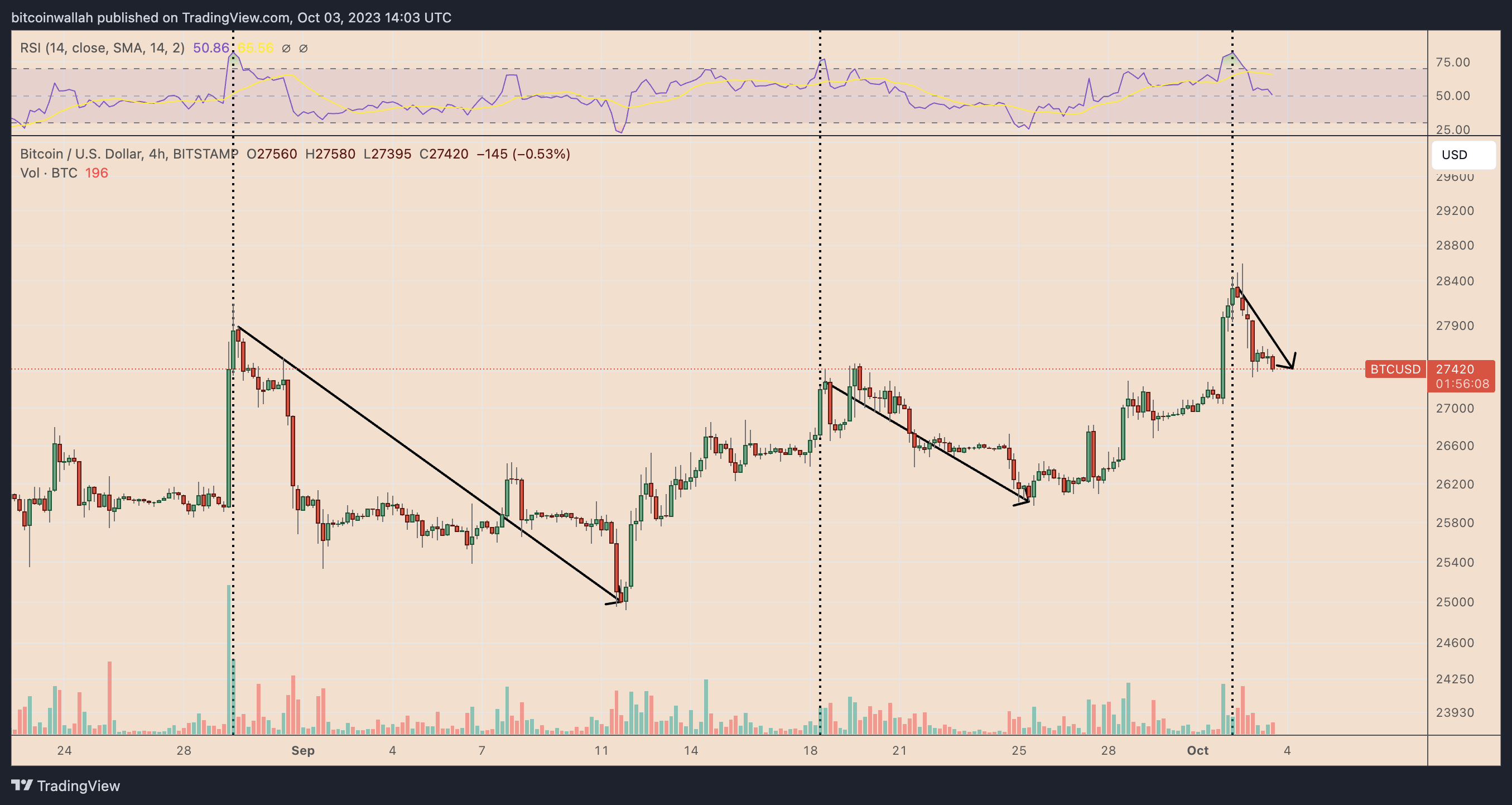
In addition, analyst Rekt Capital argues that the BTC price selloff appeared in tandem with a pre-halving fractal from 2019, as shown below.

The fractal anticipates BItcoin's price to fall for another 28 weeks until halving before rebounding toward a new record high.
Long liquidations surpass Bitcoin shorts
The Bitcoin price decline accelerated due to long liquidations overpowering shorts.
Closing a long position requires one to sell the underlying asset to protect themselves against further potential declines. As a result, long liquidations in the derivatives market force the asset's price further lower when combined with sell-pressure in the spot markets.
The past 24 hours have witnessed long liquidations worth around $23 million versus over $5 million in short liquidations, according to CoinGlass.
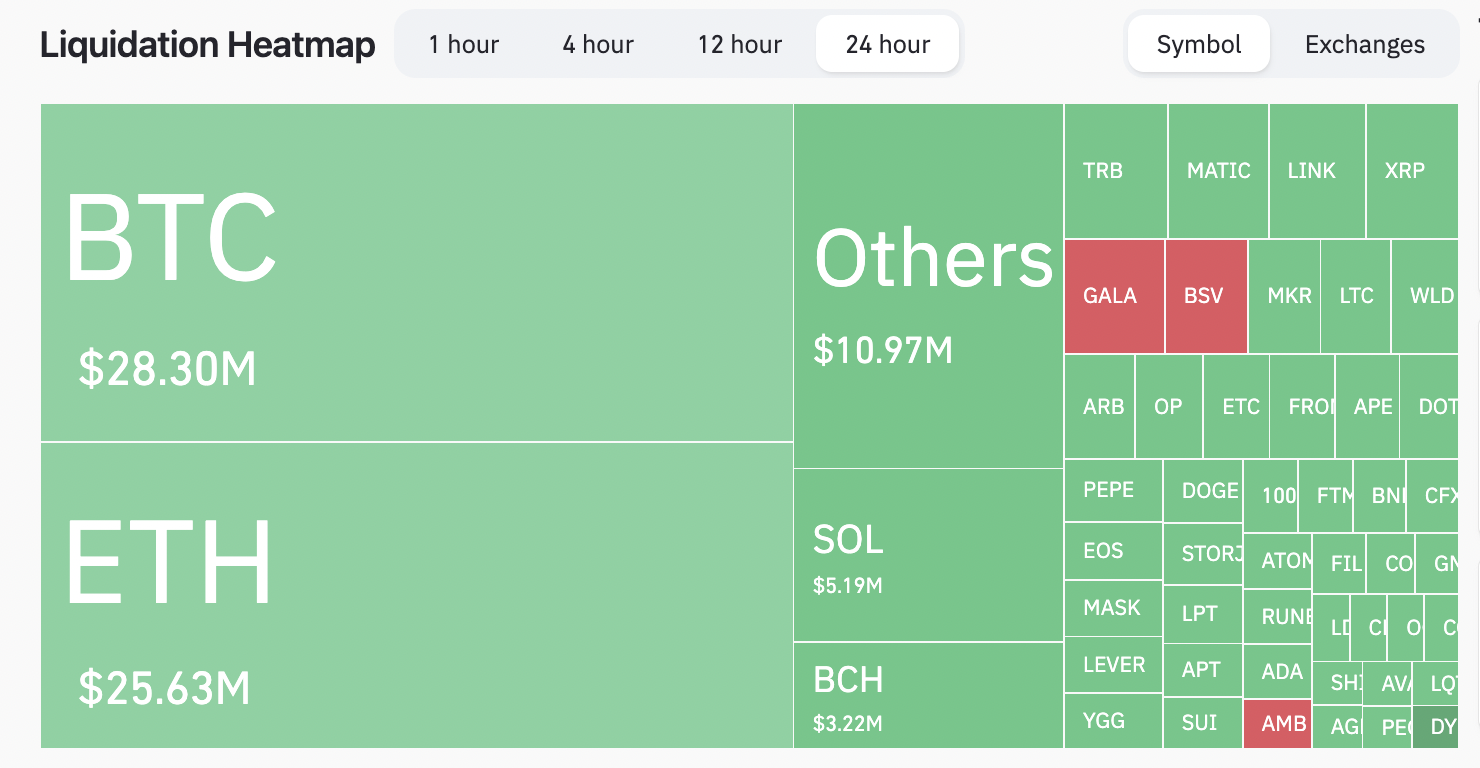
The long liquidations coincides with a drop in funding rates as well. Nevertheless, funding remains above zero, i.e., long position holders still pay for short positions, suggesting that the market is still overall bullish.

Bitcoin technical analysis
Bitcoin's technicals are also hinting at possible bearish bias with a classic bearish reversal pattern emerging on the daily chart.
A so-called rising wedge forms when the price bounces inside a range defined by two ascending, converging trendlines. As a rule of technical analysis, this pattern resolves after the price breaks below its lower trendline and drops at a length equal to its maximum height.
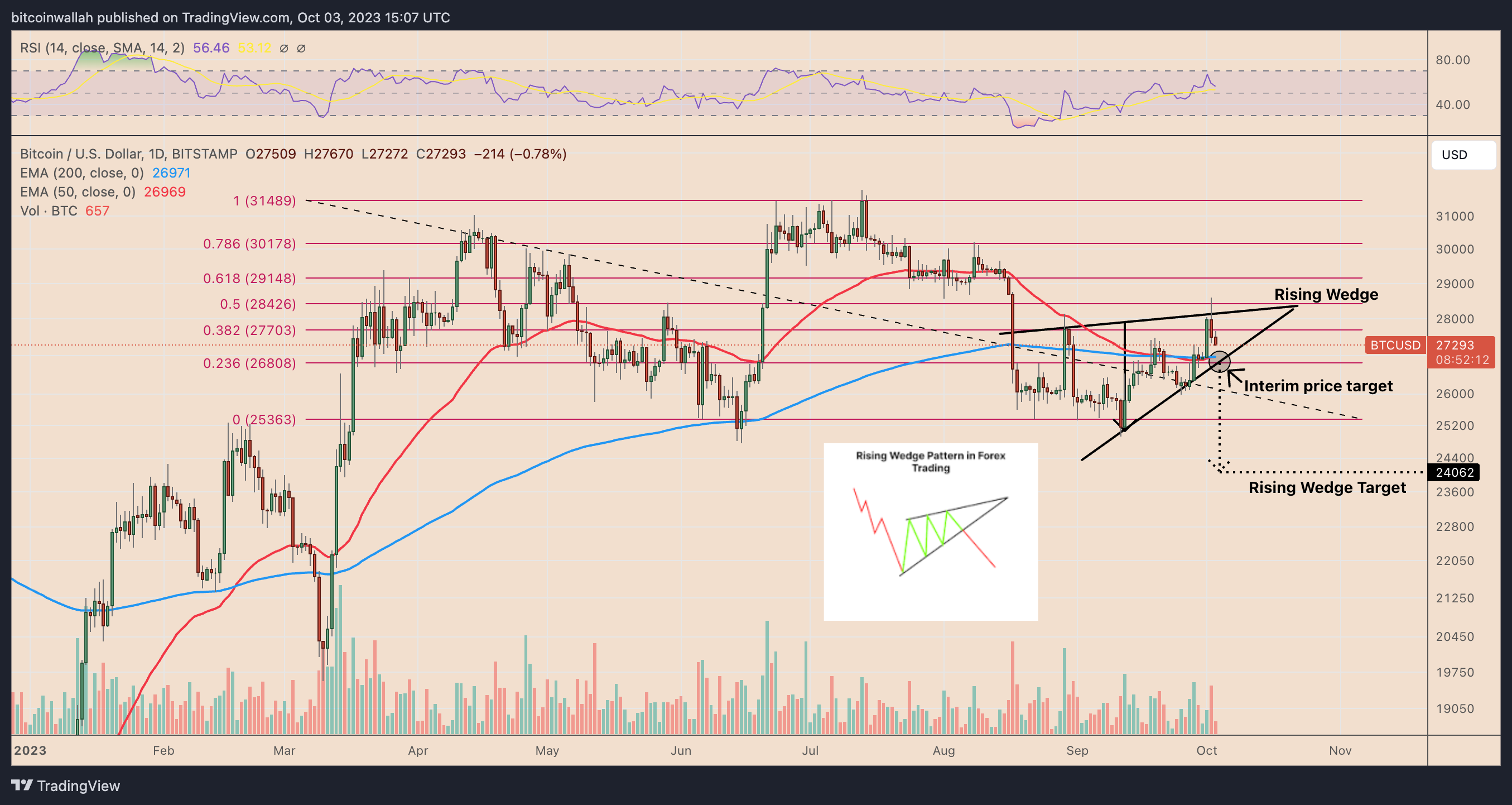
Therefore, the bears will try to pull BTC price toward the wedge's lower trendline near $26,800, a level coinciding with the cryptocurrency's 0.236 Fib line, as well as 50-day (red) and 200-day (blue) exponential moving average (EMAs).
Related: Bitcoin analysts still predict a BTC price crash to $20K
Breaking below the lower trendline could then trigger a decline toward $24,000 in the next few months, a target of about 12% below current price levels.
Conversely, a bounce before or after testing the wedge's lower trendline can have Bitcoin test the upper trendline near $28,400, coinciding with the 0.5 Fib line.
The views and opinions expressed here are solely those of the author and do not necessarily reflect the views of Cointelegraph.com. Every investment and trading move involves risk, you should conduct your own research when making a decision.
 cointelegraph.com
cointelegraph.com
